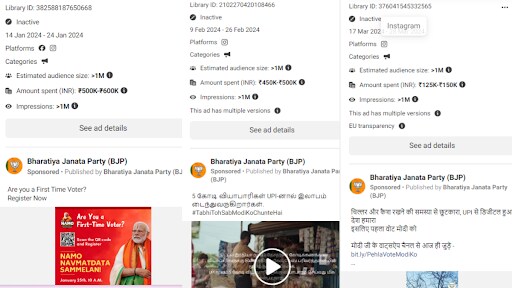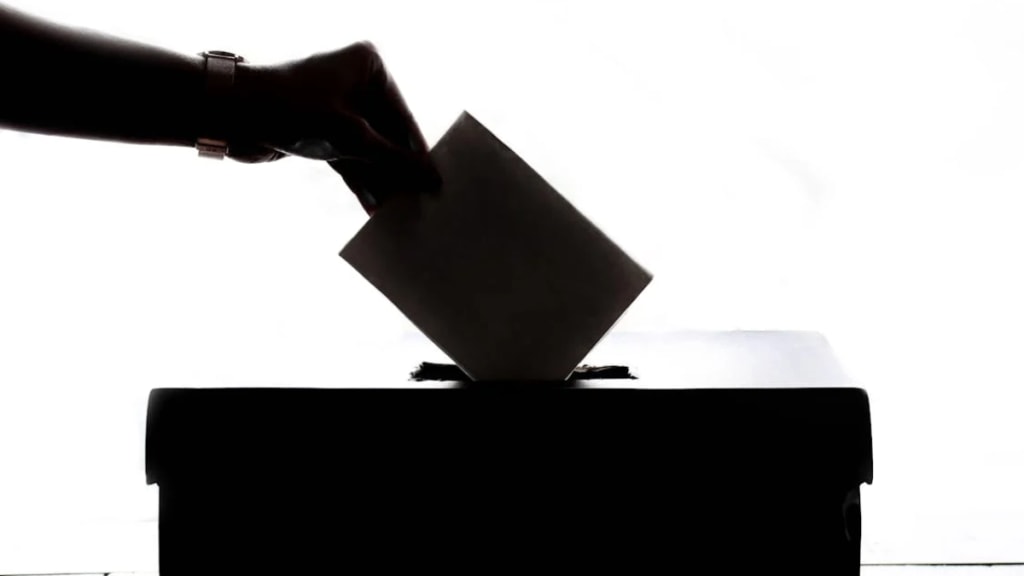It is the season of political ads thanks to this year’s General Elections. Needless to say, political parties have already begun to cash in on the fever. One of the trending ads is by the ruling party the Bharatiya Janata Party taking a dig at the coalition INDIA. Ad insertions of political parties grew by 2.8 times on TV in Jan-Feb, 2024 as compared to Jan-Feb 2023, reveals data from AdEx India (A Division of TAM Media Research). While ad insertions in print publications decreased by seven percent during the same period, political ads on radio surged exponentially about 12 times during Jan-Feb, 2024 as compared to Jan-Feb 2023. Similarly, political ads on digital surged by 11 times during the same period. “Across digital platforms, there are selected slots to advertise for political parties, hence one can optimise spending through the selection of the right slots and timing. Of course, the ruling party which is sitting at centre now has a large coffer & is expected to spend much more when compared to other political parties,” Pratik Jain, co-founder and director, I-PAC (Indian Political Action Committee) told BrandWagon Online.
In the beginning of 2024, India’s ruling party, the BJP had spent over Rs 30 crore on advertising on Google Ads and Meta, making it the leading political advertiser online, as per data from market research company Statista. It was followed by the YSRCP, a regional political party. Comparatively, the country’s other major national party, INC, trailed far behind with an online ad spend of over a million rupees during the same period. Ad revenues in India spiked that year due to the upcoming general elections.
It’s raining ads – Helluliah!
According to industry estimates the total ad spending during this year’s General Election is expected to be about Rs 4,000 crore. It is estimated that of the total spending TV and digital will account for 60-75% and the remaining 35-40% will be spent on print and digital. And within digital about 80% of the budget will spent on video platforms including social media platforms such as Instagram, YouTube among others. Moreover, in the case of print – about 80% of the spending will go to regional papers, it is believed that English dailies will get limited advertising. “Social media platforms are expected to play a big role, as political parties will try to target a varied age group. Its platforms with short videos and otherwise will be cashed in on,” a senior media planner, said on the condition of anonymity.

To be sure, industry experts opine that much of the increase in ad spend is largely due to inflation. Last General Elections, in total Rs 2,500 crore was spent on advertising. Not to mention, that on digital most it’s about a volume play. This year one of the biggest trends has been the investment in digital that too across social media. For instance, BJP for one of its ads on Facebook between January 14-24, 2024 spent Rs 50,000-60,000 to reach one million viewers. The Bharatiya Janata Party (BJP) led with a 98% share of ad insertions during Jan-Feb’24, followed by the YSR Congress Party and the All India MGR Dravida Munnetra Kazhagam, each with a one percent share. Political advertising across TV, radio, and print also experienced significant growth from Jan-Feb’23 to Jan-Feb’24. The Shiromani Akali Dal dominated TV advertising, holding 59% of the ad volume in Jan-Feb’24, followed by the DMK with an 18% share. In print and radio, the BJP led with a 13% share and a 90% share, respectively, followed by the DMK with a 10% share in print and an 8% share in radio. “The party with the most money at hand will advertise the most. And why must it not? The important point however is the fact that advertising alone can never win an election on its own. Its an amalgam of many things that help a win. Good work, good candidates and trust are a trio in themself,” Harish Bijoor, business and brand-strategy expert, explained.
The campaigns
With multiple campaigns doing the rounds one such specific case of the campaign by BJP. The campaign released across digital platforms takes a dig at the INDIA alliance, a group of opposition parties, through a spoof of their leaders such as Mamata Banerjee, Rahul Gandhi, Arvind Kejriwal, Sonia Gandhi, MK Stalin, Tejaswi Yadav among others. Instead of directly criticising them, the ad uses humour to show the opposition’s weaknesses. The ad showcases a big family with people from varied backgrounds and places. This family wants to marry off one of its members (Prime Minister candidate), but they can’t agree on who it should be. In the ad, they’re shown as a chaotic family arguing and fighting over who should be the ‘groom’ (or the prime minister). They’re all trying to convince the ‘bride’ (which represents voters) that they’re the best choice. But instead of presenting themselves nicely, they end up looking silly and disorganised. “The spoof effectively does the job of highlighting what the BJP perceives people’s deep-rooted apprehension may be regarding the opposition parties coming together. The scripting is on point and I do not doubt that it is hugely shareable and must already be doing the rounds in various social media groups. I see nothing wrong with the leading party doing such video content for higher engagement as long as serious and meaningful content is also planned as part of the campaign,” Soumitra Karnik, independent creative consultant, explained.
Traditionally political campaigns have served two purposes – to reveal the weakness of opponents through slapstick comedy and to also appraise voters about their election promises. The BJP so seems to be on point on this, as the opposition tries to play catch up. “Without delving into politics, this reminds me of famous brand rivalries, which aligns well with politics because you’re trying to outdo each other, put the other down, or get cheeky, smart, creative, and funny about it. Think of Pepsi versus Coke, Nike versus Adidas, and McDonald’s versus Burger King. It’s interesting. It’ll be interesting to see how creative Congress is in its comeback. Both have pitfalls, upsides, strengths, and weaknesses. It’s an interesting space to watch. As for this creative, it’s hilarious, but a bit lengthy from a brand perspective,” Kalyan Kumar, co-founder and CEO, KlugKlug, noted.
